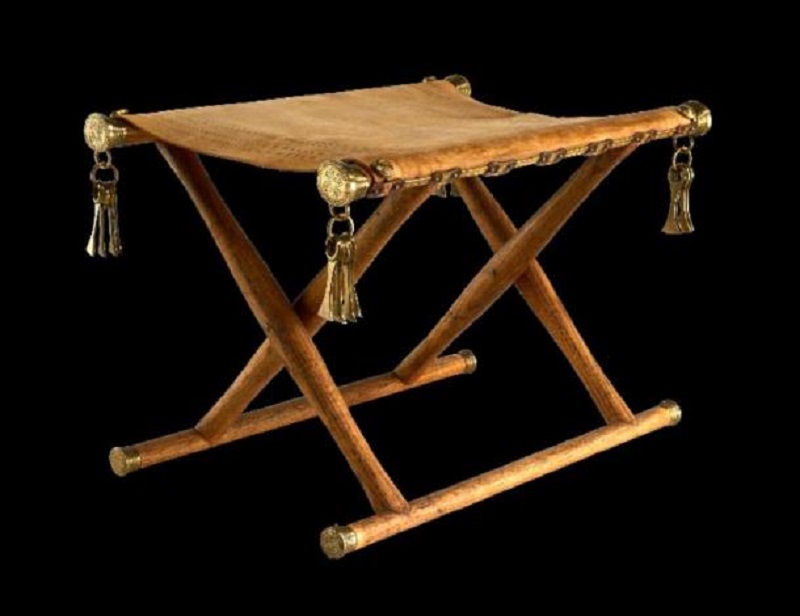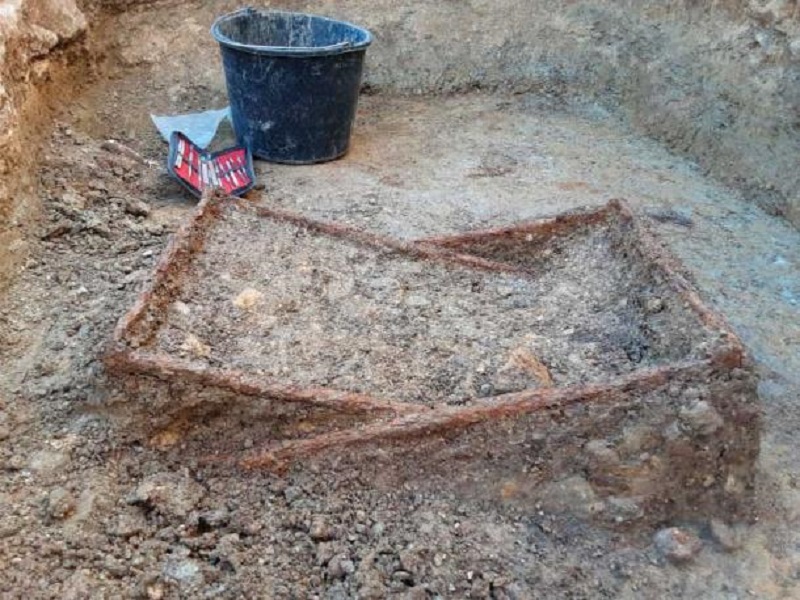Comfort in the afterlife was apparently a medieval concern. Gravesites can reveal aspects of past cultures and values, and are therefore a rich source for archaeologists and historians. An iron folding chair has been discovered in an early medieval woman’s grave from around 600 AD, only the second such find ever in Germany, according to the Bavarian State Office for Monument Protection on Monday.
Archaeologists at the site, located in Bavaria’s Central Franconia region, found the folding chair, among other items, roughly 2 meters (6.5 feet) below ground level. Although folding chairs are not a modern invention, this discovery is exciting. The rare folding chair measures 70×45 centimeters (28×18 inches), and is one of only 29 European medieval gravesites with a folding chair discovered so far. This is only the sixth iron folding chair out of those 29.
State Office Director Mathias Pfeil also stated that, “This find, which at first glance seems so modern, is an absolute rarity and of the highest cultural-historical interest, because it provides insight into the grave furnishings of elevated classes of the population and into the early use of furniture.”
The folding chair is one of few found in Europe, indicating the elite status of the deceased (Bayerisches Landesamt für Denkmalpflege)
Folding Chairs: From Royal Transport to Elite Status Symbol
Experts say that iron and bronze folding chairs have been made and found since ancient times, with evidence seen even in Roman antiquity. It performed the function of a sella curulis (the curule seat in which a king or a dignitary was carried to another kingdom). Performing such an important function, it was seen as a badge of pride, power, authority, and dignity in society.
Outside Europe, and even further back in history, a “fine” folding chair stood in Tutankhamun’s storied tomb in Egypt, made of ebony and ivory. It even had golden fittings and was dated to 1327 BC. These chairs made their mark in northern Europe around 1400 BC, like the celebrated Daensen folding chair from Guldhøj in Denmark.

Reconstruction of Daensen folding chair, dated to the Nordic Bronze Age, circa 1400 BC (Archäologisches Museum Hamburg / CC BY SA 3.0 DE)
The folding chair would signify high ranks of the seated individuals who performed ceremonies, or were honored with ceremonies. Moreover, the styles that are found in Europe reflect a confluence of cultures that flourished in the eastern Mediterranean, traveling northwards through northern Africa.
As such, they are found predominantly in women’s graves in the form of grave goods or voting deposits. This find clearly indicates the exalted social status of the deceased, with the team of archaeologists treating it as “a special find”.
In fact, most folding chair samples only have remaining individual parts like nails and axes, made of organic material like wood or ivory. Sometimes even leather or fabric were used, which decompose and disintegrate after a while. Historically, such finds have often been misunderstood as skewers or robber hooks, not as relics of folding chairs.
Other Finds at the Folding Chair Site
That was not all, however. From the same grave of the middle aged, 40-50 year old woman, the excavation team uncovered a necklace with small, multi-colored glass beads, a belt with a pendant made of brooches, and a large pearl, among other items.
A man’s grave was also uncovered from the vicinity of the Rothenburg-Endsee industrial park in an almost parallel arrangement, with east-west alignment. specifically, the grave was found in Steinsfeld (Ansbach district) in Central Franconia. It contains a belt with a bronze buckle, and “a complete set of weapons”, reports German state press agency Deutsche Welle. The weapons include a lance, shield, and a spade, along with a leg comb.

Numerous other luxury items were recovered from the same grave as the folding chair (Bayerisches Landesamt für Denkmalpflege)
The folding chair, which was deposited at the feet of the deceased woman, had an animal bone next to it – a rib from a cow as part of a meat offering. The remains of a wooden panel suggest a closed burial chamber. Her belt had a hanger which contained a brooch with two bows, an almandine disc brooch, a large millefiori bead, and a spindle whorl.
Additional analysis of the grave goods should provide more information about the woman, her life, and early medieval life in Germany.
Top image: Folding chair from circa 600 AD grave unearthed in Central Franconia, Germany. Source: Bayerisches Landesamt für Denkmalpflege



